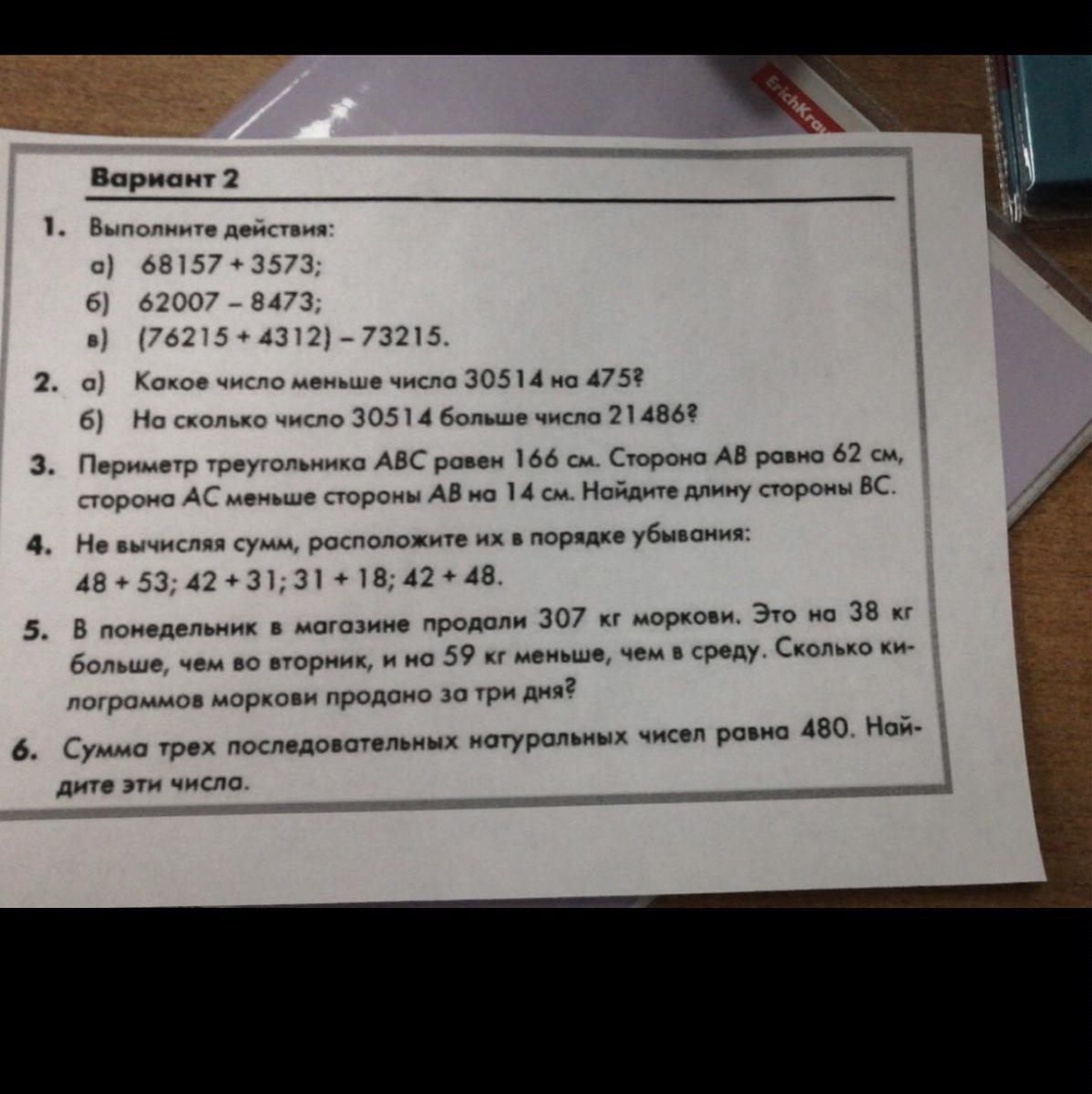Предмет: Математика,
автор: yanarutodattebae
поооомммоооогггиитттттеееееее
Приложения:

Ответы
Автор ответа:
0
Ответ:
1.
а)71730
б)53534
в)7312
2.
а)30039
б)на 9028
3.
Р=166 см;
АВ=62 см;
АС=АВ-14=62-14=48 см;
ВС-?;
ВС=166-62-48=56 см;
4.
48+ 53; 42 + 48; 42+ 31; 31 + 18.
5.
307 - 38 = 269 кг моркови продали во вторник
307 + 59 = 366 кг моркови продали в среду
307 + 269 + 366 = 942 кг моркови продали за три дня
Ответ: 942 кг моркови продали за три дня
6.
Пусть а -первое из трёх послед.натуральных чисел, тогда
а + (а+1)+(а+2) = 480
откроем скобки и воспользуемся законами сложения
а+а+а+1+2=480
3а+3=480
3(а+1)=480
а+1=160
а=159 -первое число
160- второе число
161-третье искомое число
(159+160+161=480 -проверка)
Похожие вопросы
Предмет: Английский язык,
автор: Valerochka1
Предмет: Русский язык,
автор: ТучкаЗла
Предмет: Русский язык,
автор: Юкиари
Предмет: Математика,
автор: ilia0451